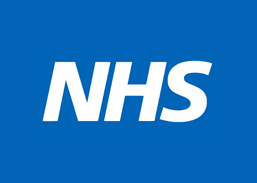Parents and carers in Calderdale are being encouraged to learn the symptoms of Strep A so they know what to look out for if their child begins to feel poorly.
Cases of Group A streptococcus (GAS), sometimes known as Strep A or scarlet fever, occur every year, although it’s more common to see them in late Winter and Spring rather than this time of year.
Symptoms include a bad sore throat which makes eating and swallowing difficult, a headache, fever and a fine, pinkish or red body rash which feels like sandpaper when touched. On darker skin the rash can be more difficult to detect visually.
Debs Harkins, Director of Public Health at Calderdale Council said:
“We know that parents and carers will be worried by reports on the news about cases of Strep A.
“We do see cases of Strep A every year, particularly amongst younger children. Strep A is a common bacteria, which lots of people carry in their throats and on their skin. What we are seeing at the moment isn’t unusual in terms of numbers of children with Strep A. It’s just the time of year that is unusual.
“The most important thing for parents and carers is to know what to look out for if your child is feeling ill. There are lots of coughs and colds at this time of year and if your child has a sore throat and a runny nose they can be cared for at home with paracetamol and plenty of fluids and your local pharmacy is best placed to offer you advice on treatment.
“What makes Strep A distinctive is having a really bad sore throat, which makes it difficult to eat or drink and a rash which feels sandpapery to touch. If your child has either of these symptoms then you need to seek medical advice.”
Parents and carers who identify these symptoms should contact NHS 111 online, call NHS 111 or their GP because early treatment with oral antibiotics is important to reduce the risk of complications, such as pneumonia or a bloodstream infection.
NHS 111 online is for people aged 5 and over. Call NHS 111 if you need help for a child under 5.
Sal Uka, Consultant in Speciality Paediatrics at Calderdale and Huddersfield NHS Foundation Trust and Clinical Director for West Yorkshire Associate of Acute Trusts said:
“Our advice for parents and carers is that if you feel that your child seems seriously unwell, you should seek emergency care immediately. For babies, if your child is drinking or eating much less than normal, has dry nappy or hasn’t passed wee for 12 hours or more or shows other signs of dehydration, feels hotter than usual when you touch their back or chest or feels sweaty or is irritable, please again contact NHS111 online (for over 5s), call NHS 111 or your GP.
“Where a child is exhibiting the symptoms of scarlet fever, such as sore throat, headache fever and a fine, pinkish or red body rash with a sandpapery feel, caused by Strep A bacteria, again contact NHS111 online (for over 5s), call NHS 111 or your GP”.
Very rarely, Group A streptococcus can infect the bloodstream. This is known as invasive Group A streptococcus (iGAS). This can be very serious, and if not treated promptly can on occasion lead to death.
Parents and carers are advised to call 999 or go to A&E if your child is showing signs of bloodstream infection (invasive Group A Streptococcus) which include noisy breathing or difficulty breathing, pauses in your child’s breathing, your child’s skin, tongue or lips are blue and/or your child is floppy, drowsy and or will not wake up.
Dr Majid Azeb, a GP in Halifax added:
“Group A streptococcus is spread by close contact with an infected person and can be passed on through coughs and sneezes, so if a child is diagnosed with Strep A then they should stay at home until at least 24 hours after the start of antibiotic treatment.
“Washing your hands more often, like we did to avoid catching COVID, is a good preventative measure.”
For more information on scarlet fever please visit the NHS website: https://www.nhs.uk/conditions/scarlet-fever/

